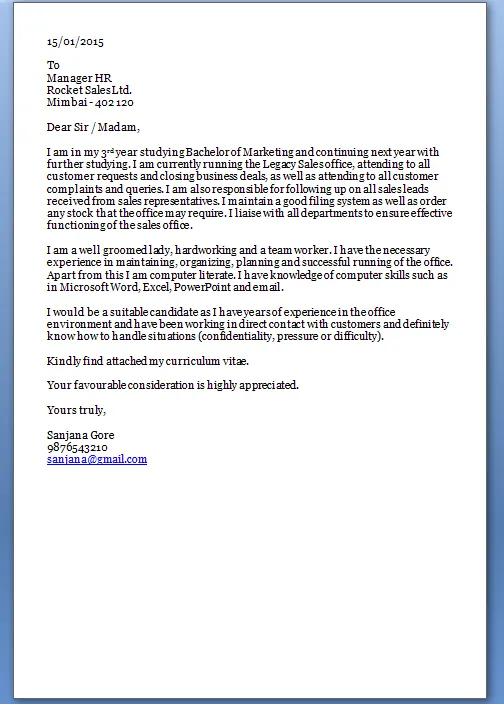What is a Cover Letter?
A cover letter is a crucial document that accompanies your resume when applying for a job. It serves as your first introduction to a potential employer and provides an opportunity to elaborate on your qualifications, skills, and experiences. Unlike a resume, which offers a brief overview, a cover letter allows you to personalize your application and demonstrate your enthusiasm for the specific role and company. A well-crafted cover letter can significantly increase your chances of securing an interview by showcasing your unique value proposition and aligning your goals with the employer’s needs. The cover letter is a vital tool in the job search process and must be handled carefully.
The Purpose of a Cover Letter
The primary purpose of a cover letter is to persuade the hiring manager that you are the best candidate for the job. It allows you to highlight the most relevant aspects of your resume, making it easy for the recruiter to see the connection between your skills and the job requirements. A strong cover letter can also demonstrate your communication skills, writing ability, and attention to detail. It gives you the opportunity to explain any gaps in your employment history, showcase your personality, and express your genuine interest in the company and the position. Ultimately, the goal is to make a memorable impression and move your application to the top of the pile.
Key Elements of a Cover Letter
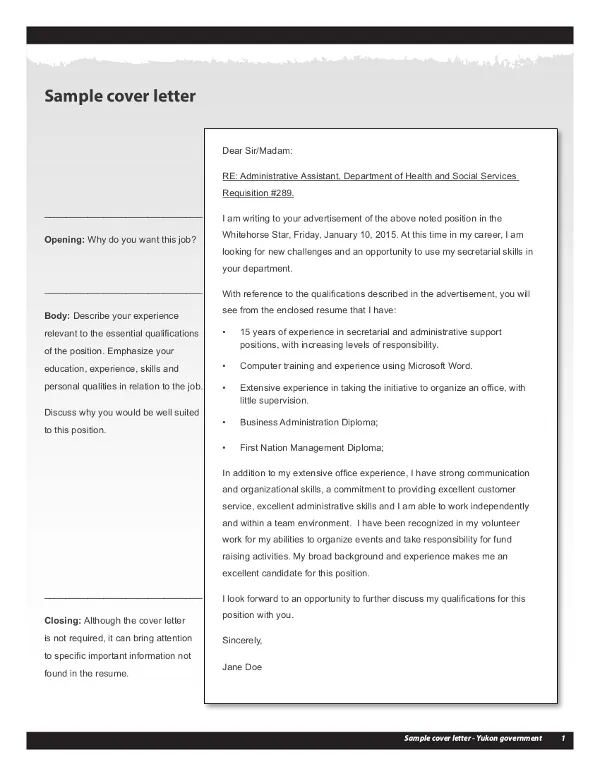
A well-structured cover letter includes several key elements that work together to create a compelling narrative. Each section serves a specific purpose, and the combined effect is a persuasive presentation of your qualifications. Proper formatting and attention to detail are essential to make a positive impression. Let’s delve into the crucial components that make a cover letter effective and memorable, thereby increasing your chances of getting noticed by recruiters.
Contact Information
Your contact information should be clearly displayed at the top of your cover letter. This should include your full name, phone number, email address, and optionally, your LinkedIn profile URL. Ensure that your email address is professional and appropriate. The goal is to make it easy for the hiring manager to contact you if they are interested in scheduling an interview. Proper presentation of contact details is the first step in creating a professional impression.
Your Name and Contact Details
Begin with your full name, followed by your phone number and email address. If you have a professional online presence, such as a LinkedIn profile, you can also include the link. This section ensures the hiring manager knows who you are and how to reach you easily.
Date and Recipient Information
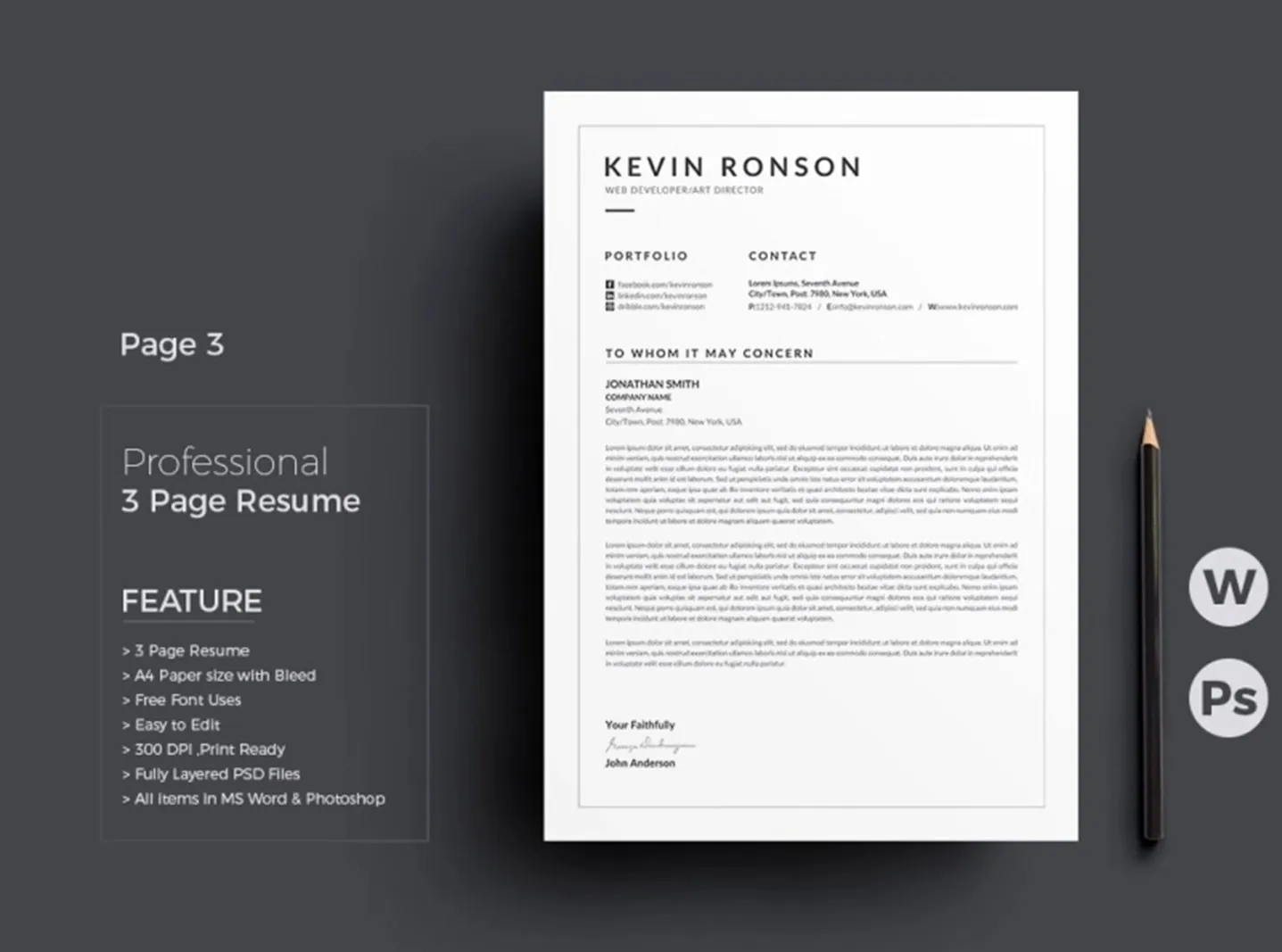
Beneath your contact information, include the date and the recipient’s details. Start with the date of the letter. Then, address the hiring manager by name, if possible. If the name is unknown, use a professional salutation like “Dear Hiring Manager.” Including the recipient’s name shows you have taken the time to research the company and role, demonstrating your attention to detail and interest.
The Salutation
The salutation is your opening greeting. It should be professional and tailored to the recipient. If you know the hiring manager’s name, use “Dear Mr./Ms./Mx. [Last Name].” If the name is not available, options include “Dear Hiring Manager,” “Dear [Department Name] Team,” or “To Whom It May Concern.” Avoid generic salutations like “Dear Sir/Madam” or “To Whom It May Concern” when possible, as they can make your letter seem impersonal.
Body Paragraphs
The body paragraphs are the core of your cover letter, where you articulate your skills, experience, and enthusiasm. These paragraphs allow you to tell your story and showcase your suitability for the role. Structure the body into three well-defined paragraphs: an introduction to grab attention, a middle section to highlight your skills and experience, and a final paragraph to express your enthusiasm and call to action.
First Paragraph: Grab Attention
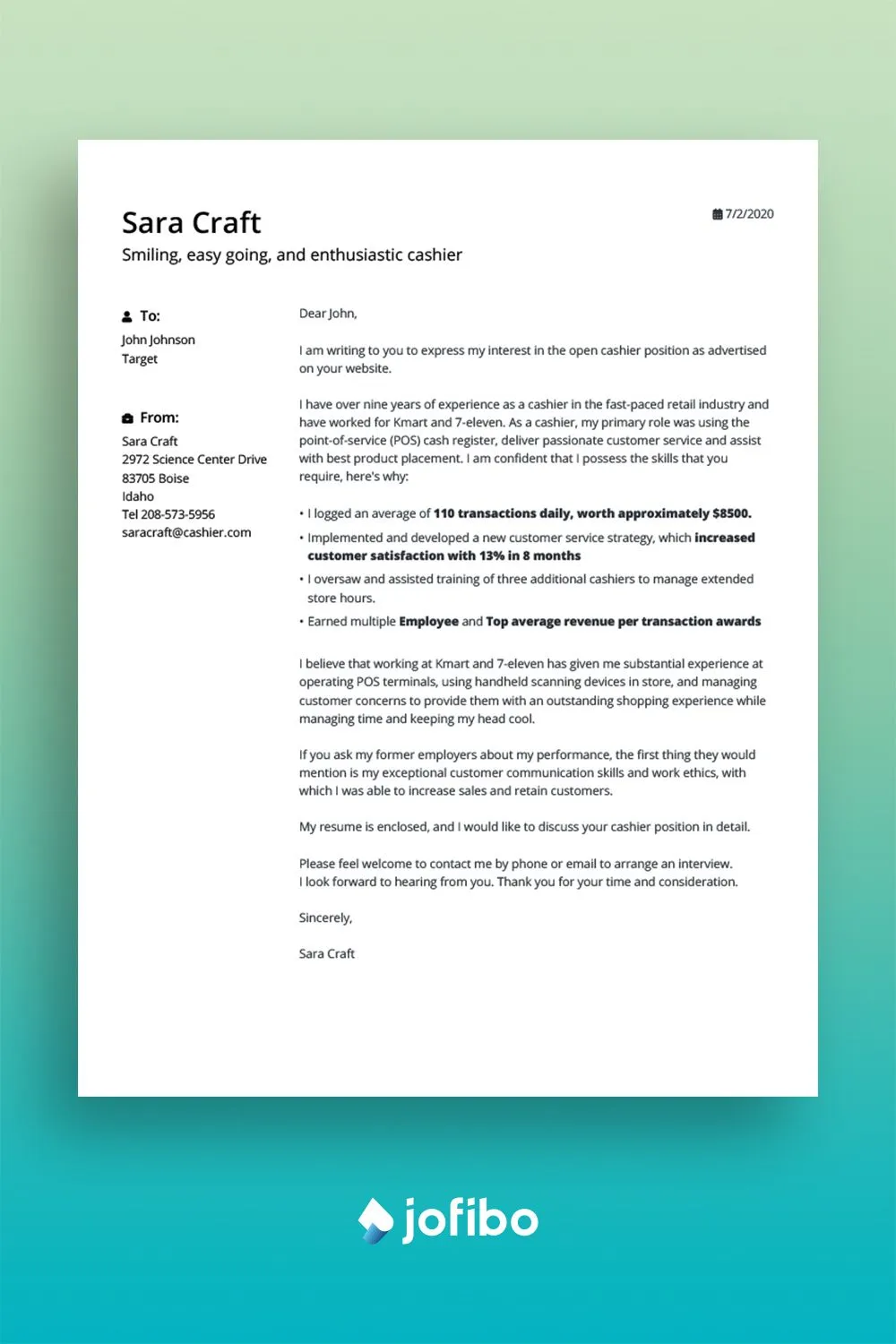
The first paragraph should immediately capture the reader’s attention. Start with a strong opening statement that highlights your enthusiasm for the position or the company. Briefly mention how you learned about the opportunity. Clearly state the position you are applying for. Consider including a compelling achievement or skill that directly aligns with the job requirements to create an instant positive impression. This is your opportunity to hook the reader and encourage them to continue reading.
Second Paragraph: Highlight Skills and Experience
The second paragraph is where you provide specific examples of your skills and experiences that make you a strong candidate. Focus on the key requirements mentioned in the job description and explain how your past experiences align with them. Use the STAR method (Situation, Task, Action, Result) to describe your accomplishments. Quantify your achievements whenever possible, using numbers to demonstrate your impact. This section should clearly connect your qualifications to the needs of the employer, demonstrating your value.
Third Paragraph: Demonstrate Enthusiasm
In the third paragraph, reiterate your interest in the company and the position. Explain why you are excited about this particular opportunity and what you hope to achieve. Mention any research you’ve done on the company and why their values align with your own. Express your eagerness to contribute to the team and the company’s success. This paragraph should showcase your passion and commitment.
The Closing
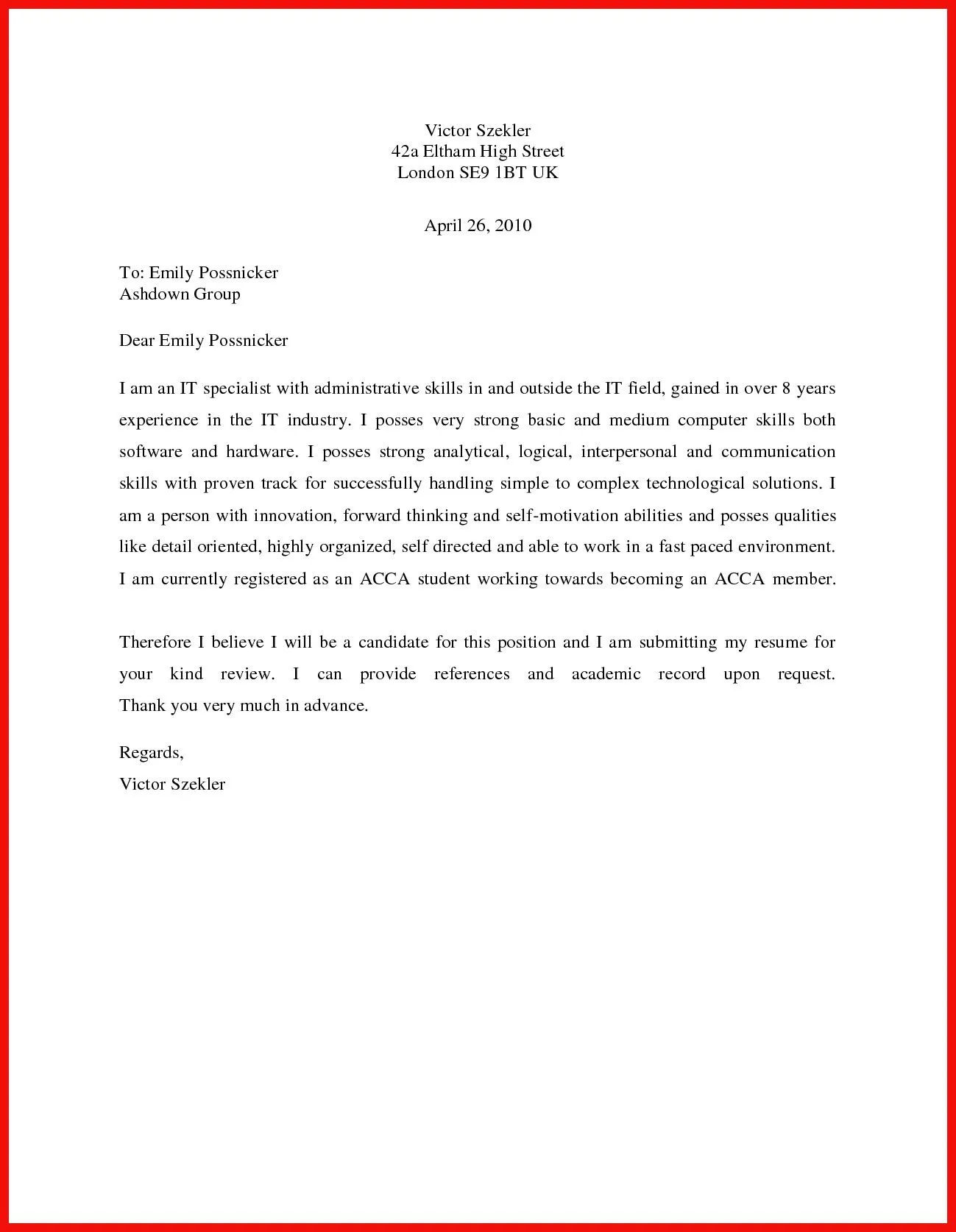
The closing is the final impression you make, so it’s crucial to end on a positive note. This section includes expressing gratitude, using a formal closing, and providing your signature.
Express Gratitude
Begin by thanking the hiring manager for their time and consideration. This shows respect and appreciation for their effort in reviewing your application. A simple statement of gratitude sets a positive tone and reinforces your professionalism.
Formal Closing and Signature
Use a professional closing such as “Sincerely,” “Best regards,” or “Thank you.” Follow this with your typed name. If submitting a physical copy, leave space for your handwritten signature above your typed name. This formal closing reinforces your professionalism and completes the cover letter. Proofread everything before submission.
Formatting Your Cover Letter
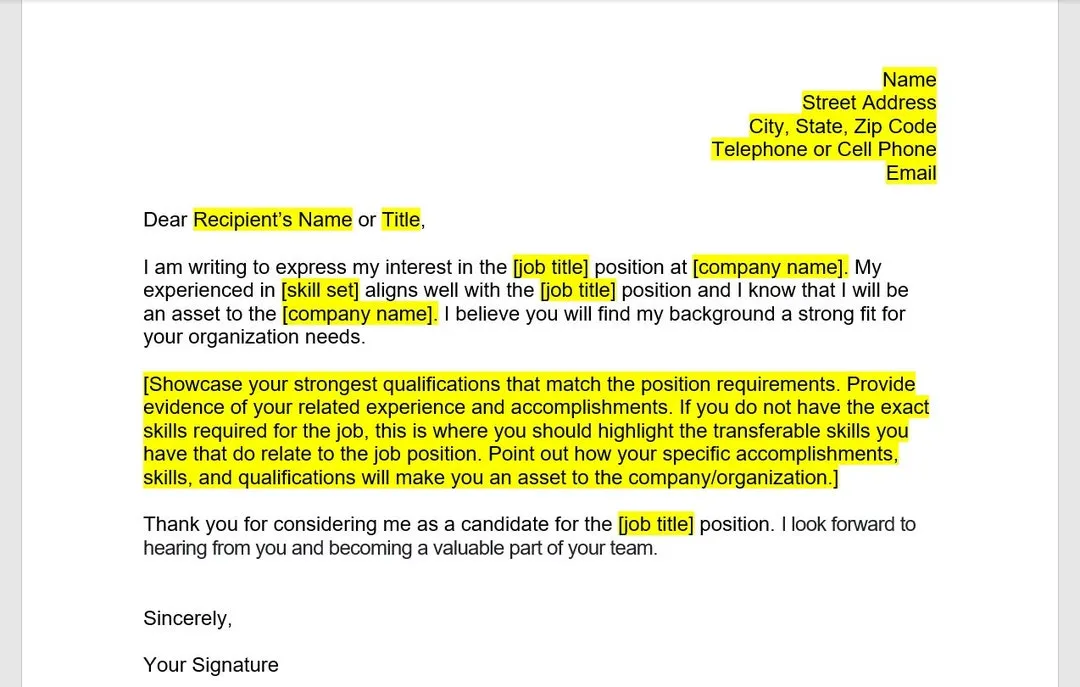
Proper formatting is essential for a professional and easy-to-read cover letter. Formatting includes font choice, font size, and overall layout. A well-formatted letter is more likely to be read and understood, helping you make a better impression. Consistency and readability are key elements to ensuring your application stands out. Proper formatting enhances the impact of your words.
Choosing the Right Font
Select a professional and easy-to-read font such as Times New Roman, Arial, Calibri, or Georgia. These fonts are widely accepted and are easy on the eyes. Avoid using decorative or overly stylized fonts, as they can distract the reader and make your cover letter appear less professional. Stick to standard fonts for readability and to create a polished look.
Maintaining Consistent Font Size
Keep the font size consistent throughout your cover letter, typically between 10 and 12 points. Use a slightly larger font size (e.g., 14 points) for your name and contact information at the top. Ensure that the font size is easy to read on any device or when printed. Consistent font sizes help make the cover letter look organized and professional.
Proofreading and Editing
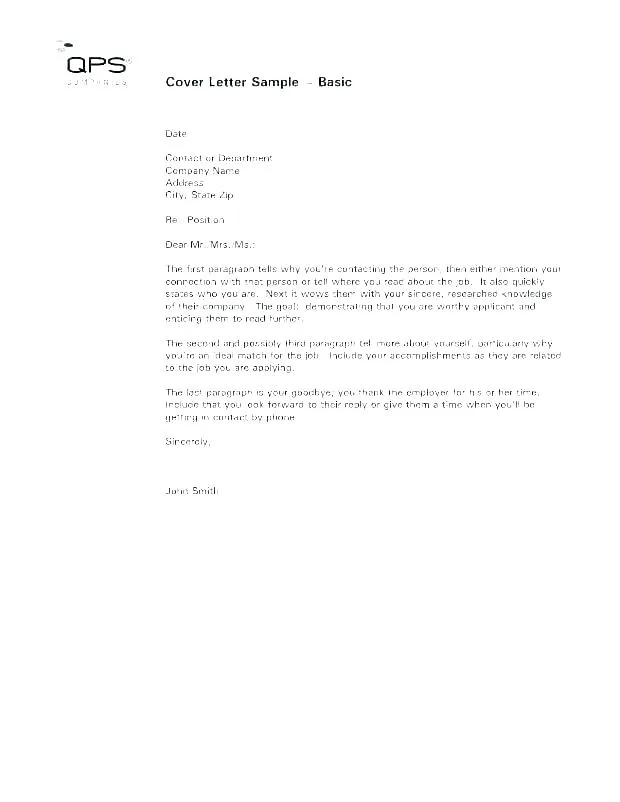
Proofreading and editing are critical steps in preparing a cover letter. Errors can undermine your credibility. Always proofread your cover letter carefully for any grammatical errors, typos, or punctuation mistakes. Consider using a spell-checker and grammar-checker, but also manually review the document. Having a friend or colleague review your letter can help identify mistakes you might have missed. A polished cover letter makes a professional impression.
Common Cover Letter Mistakes
Avoiding common mistakes can significantly improve the effectiveness of your cover letter. These errors can negatively impact your application. Understanding the common pitfalls and how to avoid them will help you create a compelling cover letter. Here are some of the most frequent mistakes made by job seekers.
Ignoring the Job Description
One of the most common mistakes is failing to tailor your cover letter to the specific job description. Generic cover letters that don’t address the requirements listed in the job posting are likely to be overlooked. Always carefully read the job description and align your skills and experiences with the required qualifications. Highlight the key skills and experiences that the employer is looking for.
Using Generic Content
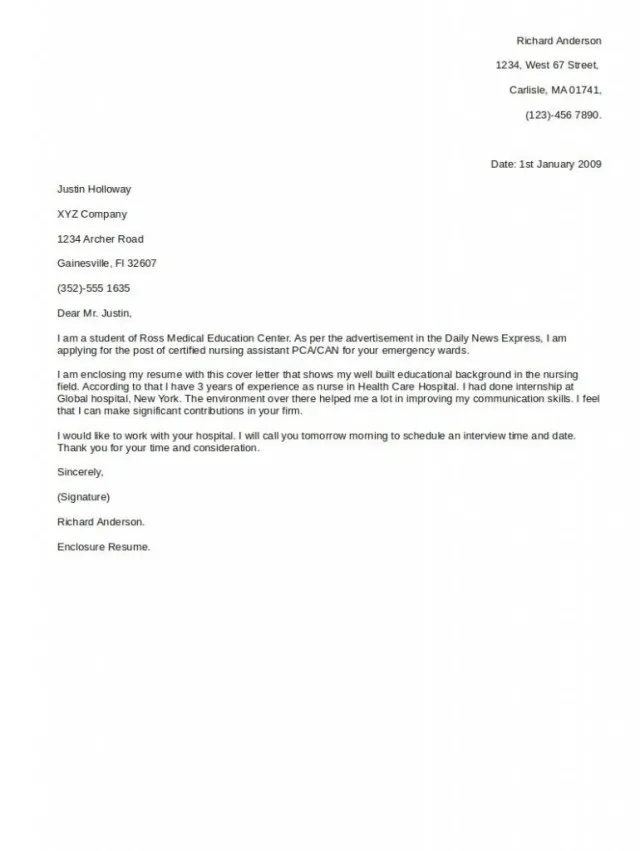
Using generic, cookie-cutter content that could apply to any job is a significant mistake. Avoid using phrases that are not specific to the role or the company. Tailor your letter to the specific position and demonstrate why you are a good fit for that role. Personalize your letter to show your interest and how your skills match the requirements.
Typos and Grammatical Errors
Typos and grammatical errors can damage your credibility and make you appear unprofessional. Always proofread your cover letter carefully before submitting it. Use a spell-checker and grammar-checker, but also read your letter multiple times to catch any errors. Having a friend or colleague review your cover letter can help ensure accuracy. Attention to detail is essential in a job application.
Customizing Your Cover Letter
Customizing your cover letter to each job application is essential for making a strong impression. Tailoring your letter shows that you understand the specific requirements of the role and the needs of the company. Customization also helps you to highlight the most relevant experiences and skills. Taking the time to personalize your letter can significantly improve your chances of getting an interview.
Tailoring to the Specific Role
Carefully review the job description and identify the key requirements, skills, and experiences that the employer is looking for. Then, tailor your cover letter to address these specific points. Highlight the aspects of your background that are most relevant to the position. Include specific examples of your achievements and experiences that demonstrate your ability to meet the job requirements. This tailored approach will show the employer that you are a good fit.
Researching the Company
Before writing your cover letter, research the company to show that you are genuinely interested in working there. Visit the company’s website, read about their mission and values, and learn about their recent projects or news. Tailor your cover letter to reflect your understanding of the company’s goals and how you can contribute to their success. Mention specific reasons why you want to work for the company to demonstrate your commitment.
Cover Letter Examples
Reviewing examples of successful cover letters can give you valuable insights into effective writing. Look at different examples to learn about formatting, content, and tone. Choose examples that align with the industry, role, and personal style. Use the examples as inspiration to create your own cover letter. They provide a template to follow but it’s crucial that you adapt and personalize them.
Example Cover Letter 1
This section would provide a complete cover letter example. Include all the elements, from the header to the closing. This example should be tailored to a specific job. It should highlight skills, experiences, and accomplishments, and it should be easy to adapt for different roles. Make sure the tone is professional and demonstrates enthusiasm.
Example Cover Letter 2
Provide a second example cover letter. This example should be for a different type of job and different situation. The structure, tone, and content should be adjusted to highlight another set of skills and experiences. Comparing the two examples will demonstrate to the user how to adapt the information to the role.
Cover Letter Best Practices
Following best practices will help you create a compelling cover letter that enhances your job application. These practices include tailoring your letter, using a professional tone, and proofreading carefully. Focusing on these best practices will increase your chances of making a positive first impression.
